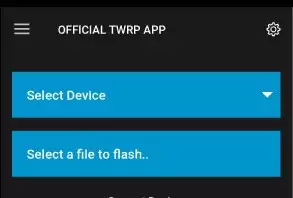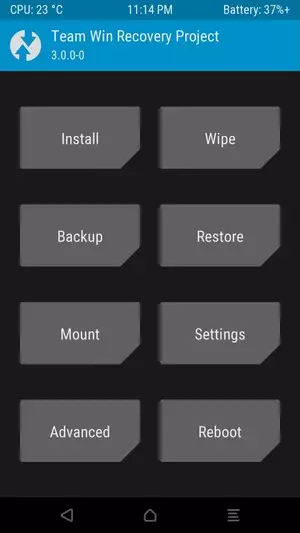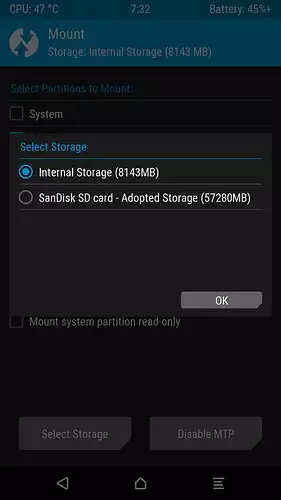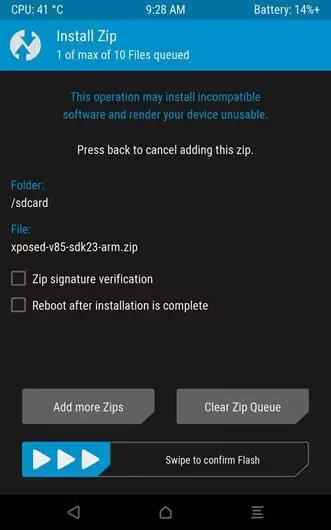Flash firmware on Freetel Priori 3S LTE
Mobiles >> Freetel >> Freetel Priori 3S LTE| Specifications | Reviews | Secret codes |
| Unlock phone | Root phone |
| Backup | Flash Firmware | Screenshot |
How to flash Freetel Priori 3S LTE?
Why reinstall the firmware?
Errors in the Android OS start to appear regularly.
Some applications do not open, reinstalling which does not lead to a positive result.
Many programs from the Play Market do not start.
The phone turns off for no apparent reason.
The phone began to slow down a lot.
You want to update the firmware, as it does not suit you in terms of functionality.
Where can I find the firmware?
On the official website of the phone manufacturer.
On specialized services where users post custom or official OS.
What should be done before installing the firmware?
Back up your contacts and user data and transfer it to your computer.
Insert your SD card into your phone. An SD card is needed to write firmware to it.
Find information about your smartphone model.
Fully charge your phone battery.
Find and download the archive with Firmware.
Installing TWRP Recovery
Download the Official TWRP App to your phone from the Play Market. And install this app.
When you start the application for the first time, you need to give consent to future manipulations, as well as to give consent to granting the application Superuser rights and click the 'OK' button.
On the next screen, select 'TWRP FLASH' and give the application root rights.

On the main screen of the application, click 'Select Device', and find your phone model.
After selecting a phone, the application will direct the user to a web page to download the modified recovery environment image file. Download the proposed *.img file.
When the file is loaded, you need to return to the main screen of the Official TWRP App and press the 'Select a file to flash' button. Select the file downloaded in the previous step.
Press the 'FLASH TO RECOVERY' button and confirm your choice, press 'OK'.
When the message 'Flash Completed Succsessfuly!' appears. Click 'OK'. The TWRP installation procedure can be considered complete.
Copy the required files to the memory card. Using a PC or laptop card reader.
Insert a SD memory card into the phone.
To reboot into recovery, you need to enter the menu accessible by pressing the button with three stripes in the upper left corner of the main screen of the application. Select the 'Reboot' item, and then click on the 'REBOOT RECOVERY' button. The phone will reboot into the recovery environment automatically..
Firmware via TWRP

Before flashing, you need to delete all user data from the phone, this will avoid errors in the software, as well as other problems. Press 'WIPE' on the home screen.
Now you can start flashing. Click the 'Install' button.

The file selection screen is displayed. At the very top is the 'Storage' button, select the location where the firmware file is located.
Select the storage to which the files were copied.

Find the file we need and click on it. A screen opens with a warning about possible negative consequences, you need to check the item 'Zip signature verification', which will avoid using corrupted files when writing to the phone's memory sections.
The procedure for flashing the phone will begin, this is accompanied by the appearance of inscriptions in the log field and the movement of the progress bar.
When the procedure for installing the firmware is completed, the message 'Successful' appears on the screen.
Summary: Chip: MediaTek MT6735P; Process technology: 28 nm; CPU: ARM Cortex-A53; CPU bits: 64 bit; Instruction set: ARMv8-A; Level 1 cache memory (L1): 32 KB + 32 KB; Level 2 cache memory (L2): 512 KB; CPU cores: 4; CPU frequency: 1000 MHz; GPU: ARM Mali-T720 MP2; GPU cores: 2; GPU frequency: 400 MHz; RAM capacity: 2 GB; RAM type: LPDDR3; RAM channels: Single channel; RAM frequency: 533 MHz; Operating system (OS): Android 5.1 Lollipop; SIM card type: Micro-SIM (3FF - third form factor, since 2003, 15.00 x 12.00 x 0.76 mm)Nano-SIM / microSD; Number of SIM cards: 2; Type/technology: TFT; Diagonal size: 5 in; Width: 2.45 in; Height: 4.36 in; Aspect ratio: 1.77816: 9; Resolution: ...
Comments, questions and answers on the flash firmware Freetel Priori 3S LTE
Ask a question about Freetel Priori 3S LTE




